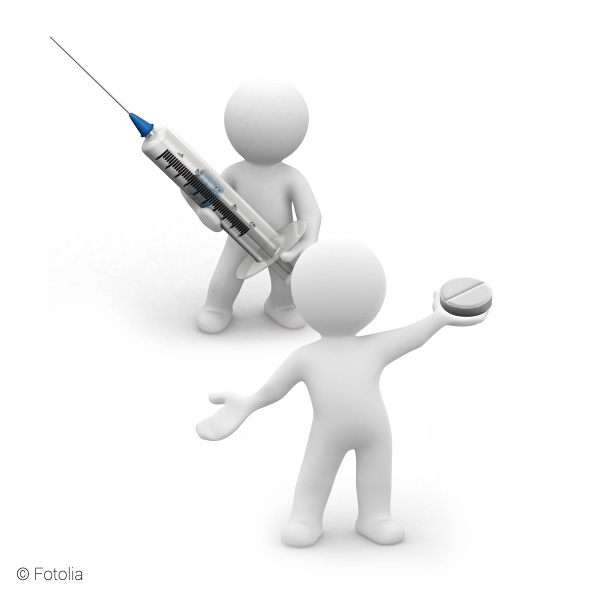Cortisone is a hormone naturally produced in the body by glands located just above the kidneys, called adrenal glands. This hormone has a powerful and immediate anti-inflammatory and pain-relieving effect.
It can also act on certain immune cells, such as lymphocytes, and thus decrease the signs of lupus activity.
Prednisone is a cortisone derivative with strengthened anti-inflammatory effects.
The goal of corticosteroids is to put lupus under control.
Depending on each clinical situation, the dose of cortisone that is necessary may vary. When there is only joint and skin involvement, a low dose of 0.10 to 0.20 mg/kg prednisone equivalent per day may be sufficient to stop or substantially reduce the lupus activity. In other cases, a higher dose of 0.5 to 1 mg/kg prednisone equivalent per day is necessary, especially in case of inflammation of the leaflets of the heart or of the pleura. In case of kidney damage, with significant loss of albumin, a dose of 0.5 to 1 mg / kg of prednisone equivalent per day is necessary, sometimes after the administration of high doses by intravenous infusion for 1 to 3 days (cortisone bolus). This helps to quickly reduce the lupus activity.
This is done with an induction treatment of 3 weeks in general, at more or less elevated doses. Then the objective is to gradually lower the doses to reach the lowest possible dose to maintain remission (minimum effective dose).
It is often around 0.1 mg/kg (6 mg if the weight is 60kg) of prednisone equivalent per day.
In some patients, cortisone may be discontinued if the background treatment (Hydroxychloroquine) is sufficient to control the disease.
It is recommended to take cortisone orally in a single dose, in the morning. If taken in the evening, there is a risk of sleep disorder. A morning intake also better respects the natural daily cycle of evolution of the levels of natural cortisone produced by the body. It may happen, for example in some cases of significant joint pain, that a second, lower, dose is recommended at the end of the day for some time.

The goal of corticosteroid treatment is to quickly reduce the lupus activity. After initial treatment, cortisone should be gradually decreased to a minimum effective dose, as close as possible to 0.1 mg/kg.